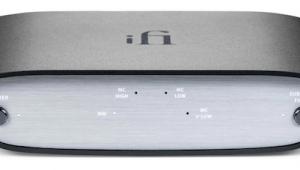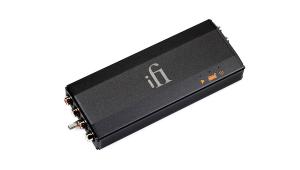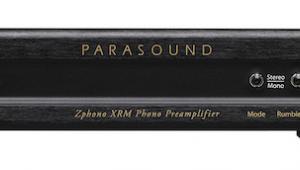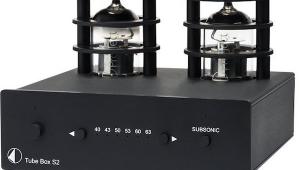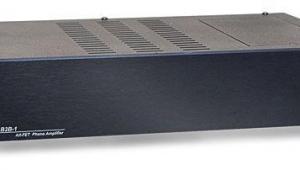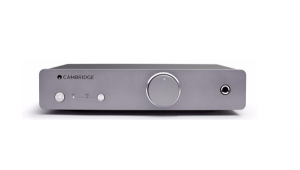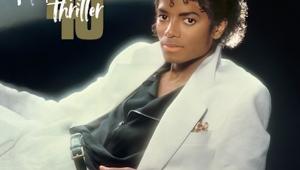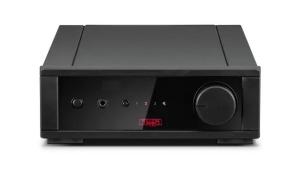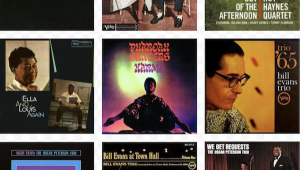PS Audio's NuWave DSD/PCM Phono Converter Reviewed
Multipurpose products like PS Audio’s snazzy new NuWave Phono Converter offer a mix of great possibilities and possible compromises. In one sleek box you have a capable and versatile MM/MC phono preamplifier and an analog to digital converter through which you can conveniently digitize your vinyl—as well as any analog input you feed it— at up to double DSD resolution. All for $1895.
Through the “NPC” as PS Audio calls it, you can listen to vinyl sources in analog or converted to digital and back via one of its asynchronous digital outputs feeding an outboard DAC (the high level analog input can only be heard post digitizing).
Other than to “A/B” the analog source and the digital conversion to test the NuWave’s digital transparency why would you want to listen to the digital conversion?
Though most analogplanet.com readers have analog systems, some audiophiles have digital-based systems. The NuWave offers these people a one box solution to add a turntable to their musical mix.
The versatile “NPC” can handle cartridges with outputs ranging from .2mV to 220mV. That alone is impressive, though has anyone ever heard of a cartridge that outputs 220mV? Most MM cartridges output around 4mV.
Rear mounted dip switches can be set for loading values of 60, 100, 160, 600, 1K, 1.6K, 50K and 100Kohms, each value associated with a specific capacitive load, though in MC these are not at all important. In MM mode the values are 100pF for 50Kohms and 47pF for 100Kohms. While 47Kohms is the de-facto MM standard, don’t worry about 50Kohms and be thankful for the higher load option, which is useful for some cartridges.
Gain can set at 18, 21, 24, 27, 30, 33, 36, 39, 42, 45, 48, 51, 54, 57, 60. 63, 66, 69, 72, 75, or 78dB. That is an unprecedented choice in my experience, though of course that includes undifferentiated MM and MC options.
I am trying to have the numbers in parentheses next to each dB gain setting explained because they don't correlate to my experience with gain versus cartridge output. For instance, in the photo used for this story you can see next to 54dB gain (3.5mV). A cartridge with that high an output would need about 39dB of gain not 54dB. 54dB would be more appropriate for a low output MC cartridge outputting about .5mV. This review will be updated when we get clarification. It may very well be that the phono preamp has an extremely high overload margin and the correct setting is more about getting sufficient gain for the digital domain conversion but that isn't made clear in the otherwise exemplary instruction manual.
The analog phono preamplifier section features a 3 stage passive RIAA input stage capable of up to 60dbs of gain with very low noise and wide bandwidth claimed to exceed 1mHz. The output stage is FET-based, fully balanced discrete offering a choice of single-ended RCA or XLR balanced connectors.
The Analog to Digital section is based on Burr Brown’s PCM4222 Delta Sigma chip running in DSD mode at all times at a constant rate of 5.6MHz. The digital output can be set to either DSD or PCM, with the conversion to PCM occurring after the DSD conversion.
The Physical Plant
The NPC is a sleek, attractive and heavy device for its size, featuring a pair of “up/down” buttons on either side of an OLED (organic light emitting diode) display. The left pair toggles you through the various adjustment options, while the right pair does the adjusting and choosing. The “Input” setting lets you choose either “phono” or high output “analog” as well as “mute”. The “A/D mode” setting lets you choose PCM or DSD and enables or disables the USB connection. The PCM SR setting toggles through 44.k, 48, 88.2, 96, 176, and 192k sampling frequency choices, and for each you can choose bit depth of 16, 18, 20, or 24. You can also set the output for “in phase” and “out of phase” (though I think they meant “in-polarity” and “reverse polarity” because why would you ever want the channels out of phase?) and more useful, switch the output to “mono”. You can also adjust the screen brightness and check on the version of the operating system.
The back panel contains the single ended and balanced outputs, as well as both phono and high-level analog inputs and SPDIF, USB and I2S HDMI outputs (more about these in the separate A/D converter review) as well as the dip switches for setting cartridge loading. PS Audio uses higher quality gold plated chassis mount RCA jacks for the phono input but not for the analog input. A well-chosen priority in my opinion! There’s also a USB port to be used only for firmware updates.
A Lot of Tech For A Little Money
in the world of high performance audio, $1895 for a highly flexible, high gain, low noise phono preamplifier and a DSD based analog to digital converter in a high tech package made in America is hard to imagine. Yet here it is. The most serious questions you have to ask yourself here is “With around $2000 to spend, do I put that all into the best phono preamp I can buy for the price or do I divert a percentage of it to getting a DSD based analog to digital converter?”
It would be nice to think you can have it all: a $2000 phono preamp and an accomplished A/D converter without sacrificing the performance of either component but in the real world is that really possible?
In other words, maybe you should buy the best $2000 phono preamp now and add an outboard A/D converter later? That’s going to be your call of course though that way you definitely lose the convenience offered by the NuWave. The question to be answered is does the NuWave compete sonically with the recently reviewed less expensive phono preamps: the $1099 Lehmann Black Cube SE II, the $1500 Rega Aria or the $1199 Musical Fidelity MI vinl? Those are the ones one hand here.
Shortly I will post 96/24 files so you can compare all of these under $2000 phono preamps. An outboard A/D converter will be used to keep the comparison fair, and then shortly after these files post, another one will be posted using the NuWave’s internal DAC.
So How Does it Sound?
The instructions caution some necessary break-in before the NuWave sounds best so I played a week’s worth of records through it, though I admit to not listening to all of them because there was other work to do on the main turntable. But I did keep an ear on the sound, which definitely became more supple over time.
When I began to not hear changes I began serious listening to the same records used previously: the upcoming Analogue Productions reissue of “Rhapsody In Blue”/”American in Paris” with Fiedler, the BSO and Earl Wild, Cat Stevens’ “Mona Bone Jackon” and a few others. The turntable was the same Pro-Ject Xtension10 ($2999) and Transfiguration Phoenix MC cartridge ($4249). Believe me, these phono preamps are living “above their means”. The Phoenix’s .4mV output should be a piece of cake for any MC phono preamp and the NuWave’s 60 ohm loading setting was low enough for the low impedance design.
The NuWave was commendably quiet and its transient performance was fast and clean. Its overall sonic personality was on the antiseptic/analytical side and because its midbass/lower midrange was less than fully fleshed out it sounded lean overall. The top end was airy and nimble but trebles were crystalline and less what I would describe as “texturally rich”, so cymbals sounded more “crispy” than “brassy”.
The NuWave’s lower bass performance was well-extended and very "tight" but texturally less supple compared to the Lehmann Black Cube SEII for instance, so it sounded more like "bass" than an easily identifiable instrument.
Perhaps because the NuWave’s balance was lean in the midbass, its spatial performance was relatively flat, with images setting up against the speakers and extending in a flat line across the stage. At higher SPLs the sound began to get hard as the lean top asserted itself.
If your system is too warm now and/or your midbass is on the flabby side (as can be the case with many stand-mount two ways or with certain cartridges), the NuWave’s sonic personality may work well in such a system.
Dynamics were also no match for the Black Cube or for the punchy Rega Aria for that matter. Overall I’d say the NuWave’s phono preamp section was the sonic opposite of the Musical Fidelity M1 Vinl’s, which was on the warm, soft and forgiving side.
When the files are posted you will be able to listen to all of these phono preamps and vote for your favorite. As with the recent phono cartridge ‘shootout’ they will not be identified until the votes are in and have been tabulated.
Based on my listening experience, the NuWave Phono Converter's sonics were, for the most part, especially when it comes to long term listenability, not competitive with the less expensive phono preamps recently reviewed, but you be the judge! The files have been prepared and await posting by the site's webmaster.






